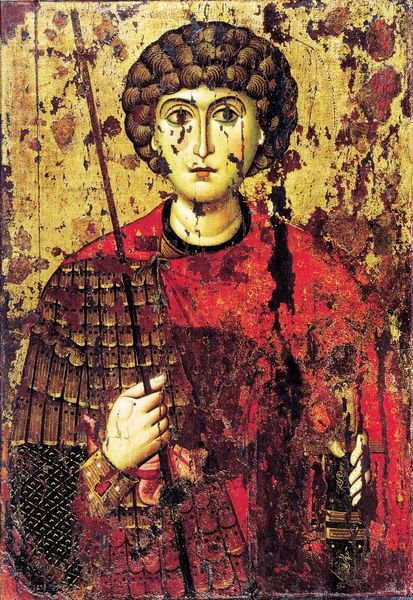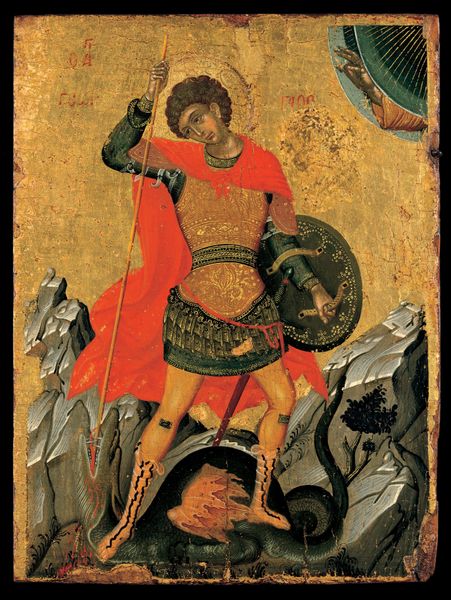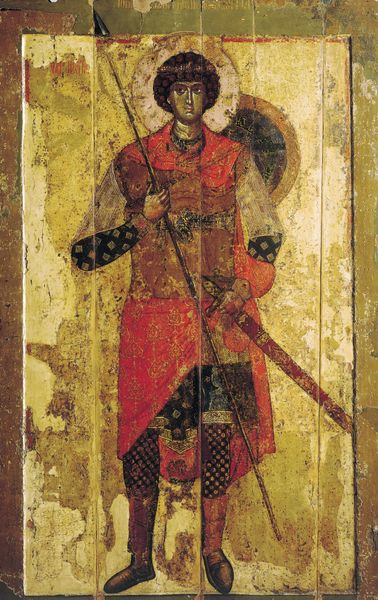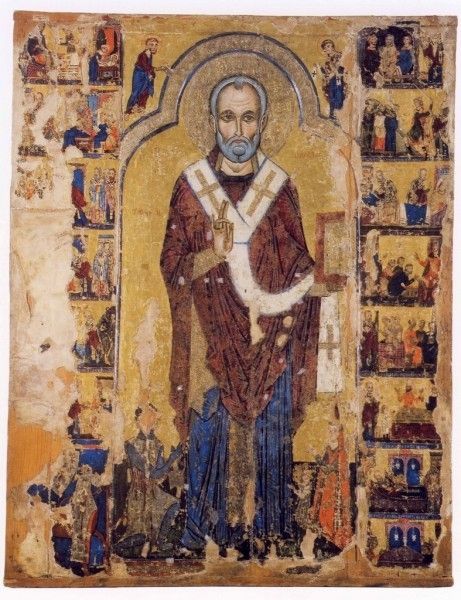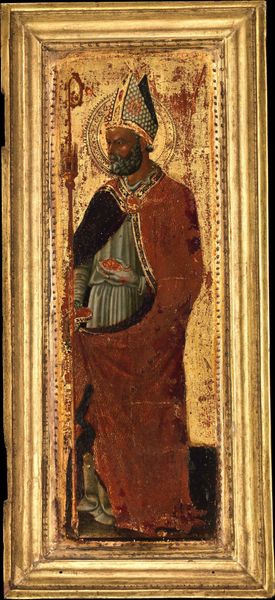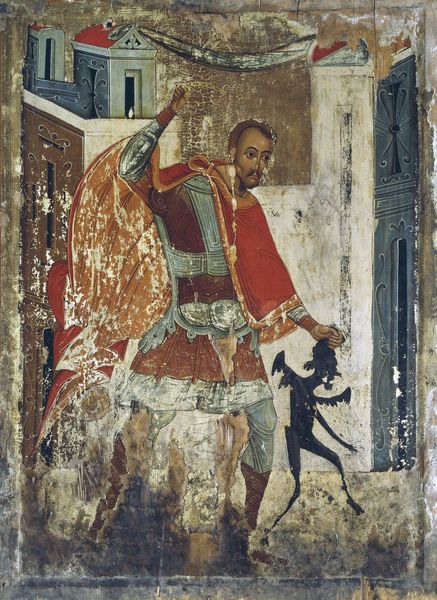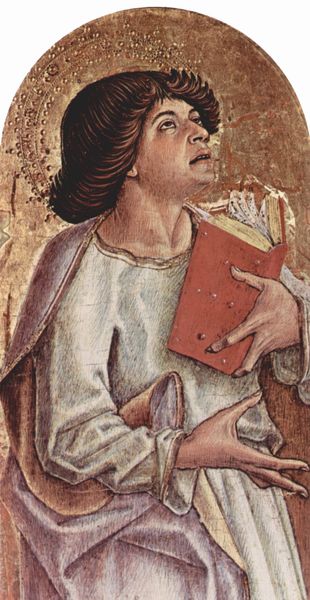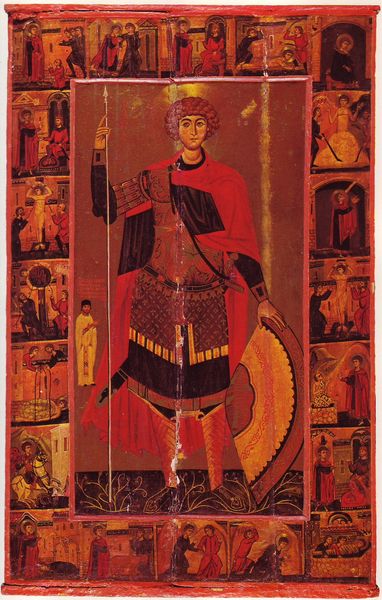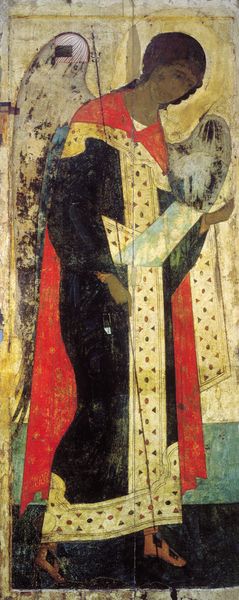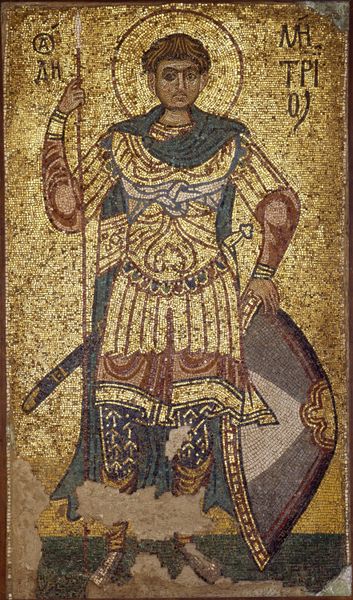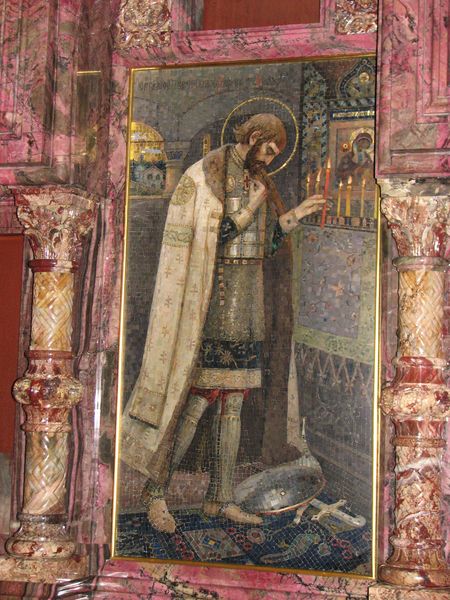
tempera, painting
#
portrait
#
byzantine-art
#
medieval
#
narrative-art
#
tempera
#
painting
#
figuration
#
history-painting
Copyright: Orthodox Icons,Fair Use
Editor: So this is Saint George, a tempera painting from around 1300. It's currently at the Byzantine and Christian Museum in Athens. I'm really struck by the material quality. It looks almost carved, not painted! What strikes you when you look at it? Curator: Well, considering the medieval Byzantine context, I immediately think about the intense labor that went into creating this icon. Think of sourcing and processing pigments, potentially from ground minerals like lapis lazuli, the meticulous layering of tempera, probably egg yolk based. Then there's the wooden panel itself— who forested, seasoned, and prepared it? How does that influence the viewing of religious imagery? Editor: I hadn’t considered all that manual effort! So, instead of seeing just a saint, we should be thinking about the various artisans and materials involved? Curator: Precisely. Even the gold leaf used for the halo points towards a network of trade and specialized craft. This isn’t just about religious symbolism, it’s about economics and social stratification expressed through materiality. Note the details and craftsmanship of his clothes, especially his boots; is there attention to this, maybe even to depict George as particularly divine? What sort of message does it bring in terms of the labor force involved? Editor: So, you're suggesting that the icon's value, both spiritually and monetarily, is embedded in the material processes that made it possible? Curator: Exactly! It's easy to get lost in iconography, but by grounding ourselves in the "how" of its making, we can better understand its place in society and how people truly engaged with it. Editor: That's a totally different way of thinking about religious art, thanks! It makes me consider where this painting was made and what the context was, rather than just thinking about the subject portrayed. Curator: Yes, thinking about where materials came from, who supplied them, how techniques impacted workshops or other art objects opens up avenues into broader connections to our present society.
Comments
No comments
Be the first to comment and join the conversation on the ultimate creative platform.
